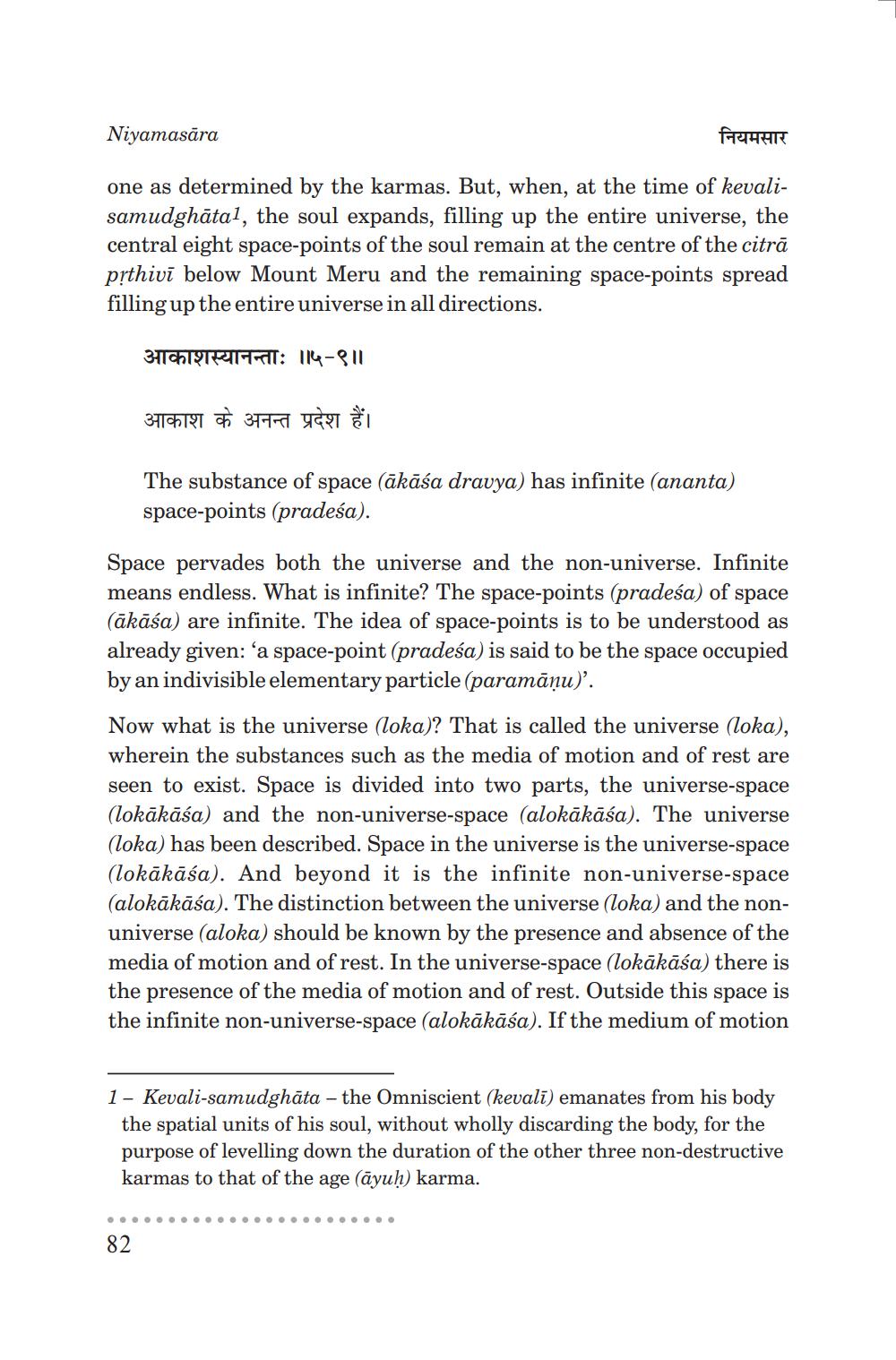________________
Niyamasara
नियमसार
one as determined by the karmas. But, when, at the time of kevalisamudghata1, the soul expands, filling up the entire universe, the central eight space-points of the soul remain at the centre of the citrā prthivi below Mount Meru and the remaining space-points spread filling up the entire universe in all directions.
आकाशस्यानन्ताः ॥५-९ ॥
आकाश के अनन्त प्रदेश हैं।
The substance of space (ākāśa dravya) has infinite (ananta) space-points (pradeśa).
Space pervades both the universe and the non-universe. Infinite means endless. What is infinite? The space-points (pradeśa) of space (ākāśa) are infinite. The idea of space-points is to be understood as already given: 'a space-point (pradeśa) is said to be the space occupied by an indivisible elementary particle (paramāņu)'.
Now what is the universe (loka)? That is called the universe (loka), wherein the substances such as the media of motion and of rest are seen to exist. Space is divided into two parts, the universe-space (lokākāśa) and the non-universe-space (alokākāśa). The universe (loka) has been described. Space in the universe is the universe-space (lokākāśa). And beyond it is the infinite non-universe-space (alokākāśa). The distinction between the universe (loka) and the nonuniverse (aloka) should be known by the presence and absence of the media of motion and of rest. In the universe-space (lokākāśa) there is the presence of the media of motion and of rest. Outside this space is the infinite non-universe-space (alokākāśa). If the medium of motion
82
1- Kevali-samudghata - the Omniscient (kevali) emanates from his body the spatial units of his soul, without wholly discarding the body, for the purpose of levelling down the duration of the other three non-destructive karmas to that of the age (ayuḥ) karma.
........




